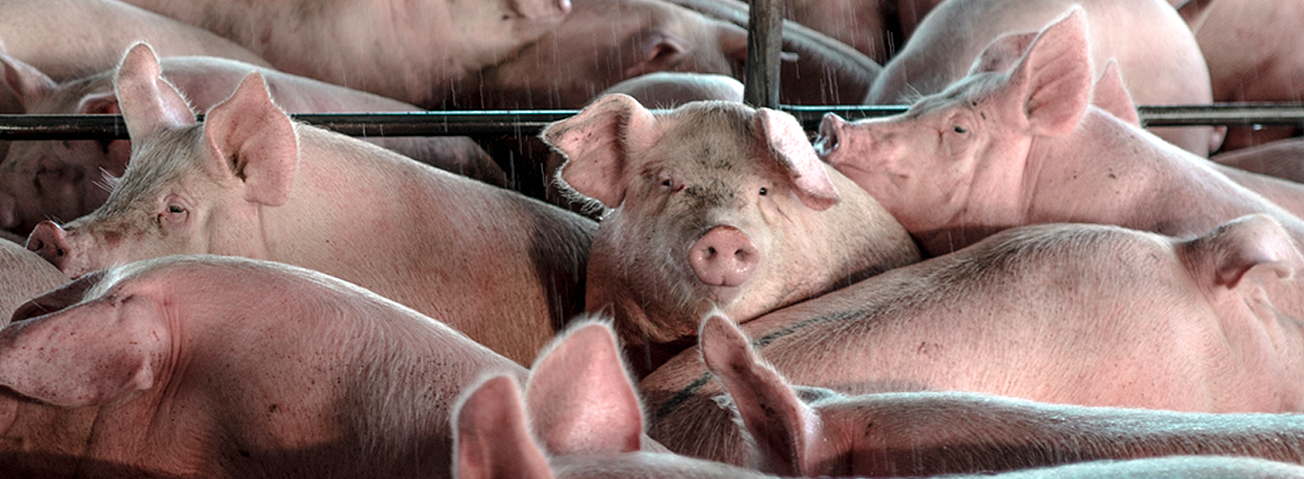
COVID-19 Affected Hog Slaughter Volumes in 2020, but Impacts and Trajectory of Recovery Differed Across Regions
- by Samantha Padilla
- 2/24/2022
The Coronavirus (COVID-19) pandemic impacted production in pork processing plants across the United States with effects reverberating throughout the pork supply chain. For the first 3 months of 2020, slaughter volumes at U.S. federally inspected pork processing plants outpaced rates for the same period in 2019. Beginning in March 2020, however, increasing COVID-19 infections among workers at meat processing facilities resulted in slowed production and temporary plant shutdowns. Slaughter rates fell below 2019 levels from mid-March to May 2020 (see figure below) before exceeding 2019 rates in 5 of the following 7 months.
The COVID-19 pandemic did not affect slaughter rates in every region and State equally. In six States (e.g., North Dakota, Washington, West Virginia, and Wyoming), hog slaughter rates sharply increased in April and May 2020 compared to April and May 2019, while in other States (i.e., New Jersey, Utah, and Louisiana), rate declines were steep in 2020 compared to the same months in 2019. Large pork-producing States, such as Indiana, Minnesota, and Missouri, experienced more moderate declines in slaughter (see figure below).
At the onset of the pandemic, slaughter rates decreased in every major pork processing region, while minor processing regions experienced mixed changes in slaughter rates. The magnitude of change in slaughter also varied across regions. For major pork processing regions, such as Regions 5 (Illinois, Indiana, Michigan, Minnesota, Ohio, and Wisconsin) and 7 (Iowa, Kansas, Missouri, and Nebraska), there was a deep decline in slaughter rates at the beginning of the pandemic compared to year-earlier 2019 levels, but the decline was short-lived. By June, slaughter rates in Regions 5 and 7 surpassed those observed in June 2019. While COVID-19 cases continued to increase throughout the year, slaughter rates recovered shortly after the onset of the pandemic (see charts below).
Slaughter rates in the pandemic varied across minor processing regions. For instance, Region 2 (New Jersey and New York) experienced a large decline in slaughter at the outset of the pandemic; however, in contrast to major processing regions, the contraction persisted. Slaughter rates remained below 2019 levels throughout the year. Region 9 (Arizona, California, Hawaii, and Nevada) is also not a major processing region; however, unlike Region 2, slaughter rates in 2020 were consistently above 2019 rates (see charts below).
Overall, total hog slaughter in 2020 exceeded 2019 levels, despite most regions experiencing a multimonth decline following the onset of the COVID-19 pandemic. While further work is needed to determine the full spectrum of reasons driving differences in regional recovery trajectories, improvements in processing rates in the months following the pandemic are, in part, related to workforce availability and individual plants adopting safety precautions.
Specifically, regions with greater concentrations of larger volume processing plants—Regions 5 and 7—were profoundly affected by the initial shock of COVID-19 as indicated by sharp declines in output. After the initial shock, however, the larger plants that are concentrated in these regions quickly worked to adopt new safety practices such as increased COVID-19 testing, providing personal protective equipment, and increased worker spacing. This helped to expedite a recovery in processing capacity in these plants. Further, after June 2020, larger volume plants made a variety of labor-focused adjustments. They included higher Saturday slaughter levels, worker wage bonuses, and the simplification of processing (i.e., reduced variety of meats and by-products).
The combination of additional safety precautions, worker incentives, and use of labor-saving processing methods resulted in a swift return to prepandemic volumes at large facilities and in regions in which they are concentrated.
This article is drawn from:
- Padilla, S., Schulz, L.L., Vaiknoras, K. & MacLachlan, M. (2021). COVID-19 Working Paper: Changes in Regional Hog Slaughter During COVID-19. U.S. Department of Agriculture, Economic Research Service. AP-095.
You may also like:
- Knight, R., Davis, C.G., Hahn, W., Cessna, J., Terán, A., Haley, M., Valcu-Lisman, A., Grossen, G. & Brooks (Taylor), H. (2021). Livestock, Dairy, and Poultry Outlook: September 2021. U.S. Department of Agriculture, Economic Research Service. LDP-M-327.
- Haley, M. (2020). Livestock, Dairy, and Poultry Monthly Outlook, May 2020. U.S. Department of Agriculture, Economic Research Service. LDP-M-311.
- Cromartie, J., Dobis, E.A., Krumel, T., McGranahan, D. & Pender, J. (2020). Rural America at a Glance: 2020 Edition. U.S. Department of Agriculture, Economic Research Service. EIB-221.







